Blanketing an entire region, or even much of the globe, in destructive electromagnetic energy that can completely fry or disable electronics, an EMP has the potential to plunge civilization back into the Stone Age, or at least to the pre-industrial age.
And whether it is caused by a nuclear warhead, some kind of specialty weapon, or even natural solar activity, some of the most vulnerable things we rely on daily are our cars.
But if you pick properly, you won’t be forced to go back to a bicycle or a horse and buggy. Some vehicles lack the electronic components and controls that are so vulnerable to an EMP.
Keep reading, and I’ll give you a list of 12 that you should consider investing in as part of your EMP preparations…
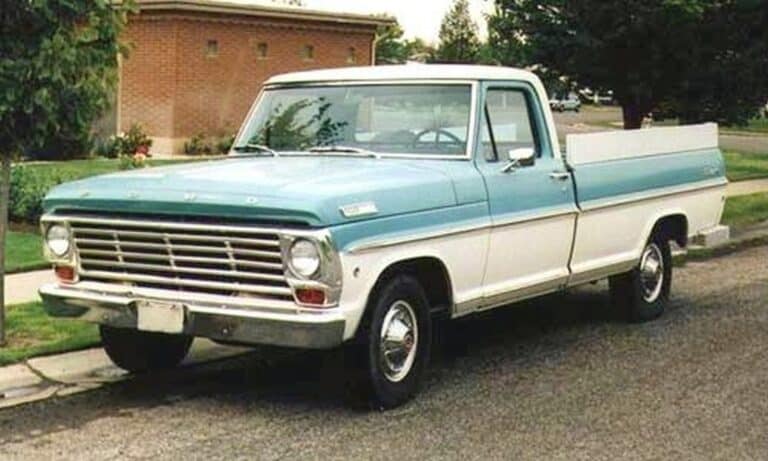
Ford F-100 Pickup
Arguably the greatest of the American classic pickup trucks, the F-100 badge is synonymous with simplicity, ruggedness, and hard-working utilitarianism.
Classically styled, easy to maintain, and easy to fix, this is a superb choice for an all-around EMP-proof hauler, and they are an echo of a time in American automotive production when you could actually get a simple pickup truck that wouldn’t run you a second mortgage.
There are thousands and thousands of F-100s still out there, and the designation was in use by Ford since the early ’50s. However, earlier is definitely better here, and consider 1980 as the cutoff for picking an EMP-proof ride, and one from the early ’70s or even a bit before is even better.
One good thing about this truck as an EMP-proof vehicle is that you’ll have several options when it comes to bed style and size depending on your requirements.
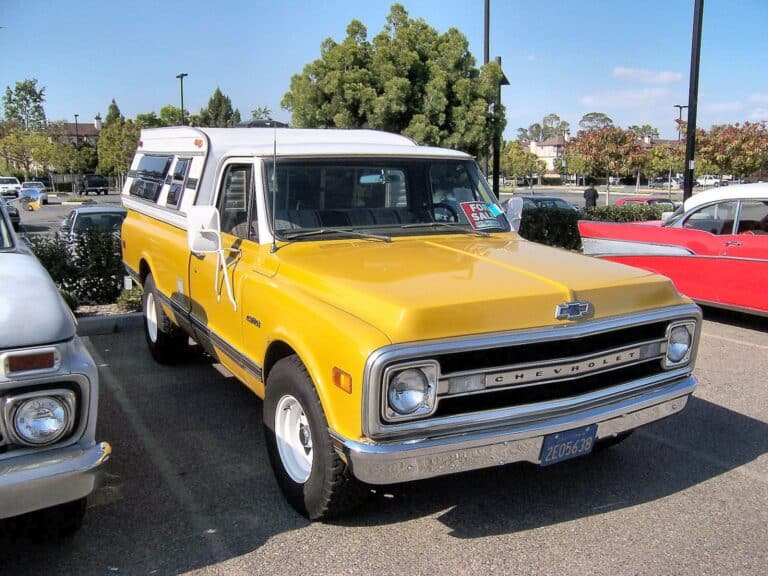
Chevrolet C/K Series Pickups
We can’t leave the Chevy owners out, and no, I don’t discriminate. I know I would get taken to task if I didn’t include Ford’s best competitor in the EMP-resistant category.
Introduced in the ’60s, the Chevy C and K series are basically identical except for the drivetrain, with the C models being two-wheel drive and the K models being four-wheel drive.
I know, no prepper worth their salt would even think of going without four-wheel drive, but you don’t always need it. These are likewise simple, durable, and reliable trucks that are easy to fix and have hardly any electronics to speak of if you can get one made in or prior to 1972.
If you are a Chevy truck lover and looking for the perfect EMP-proof pickup, put these at the top of your list.
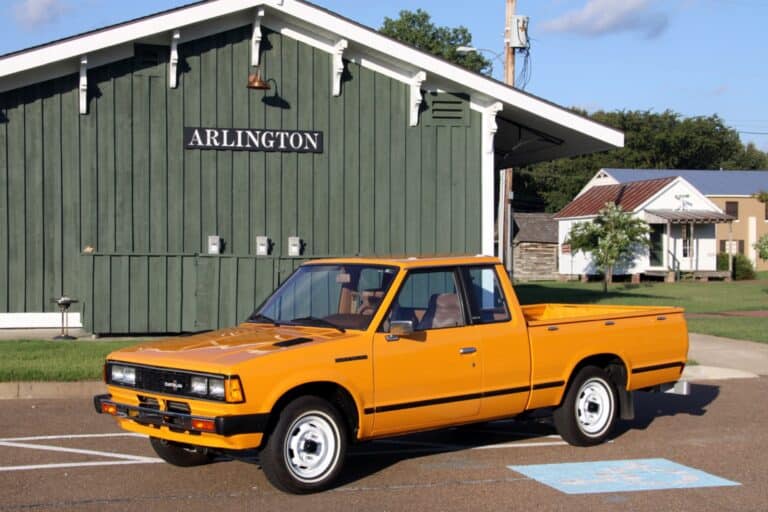
Datsun/Nissan 720 Pickup
Another small classic pickup known for its lack of electronics, efficiency, and affordability.
You can get one of these pint-sized trucks in two-wheel drive or four-wheel drive for not much money even today, although the current strain on the secondary market due to the economy means you’ll be paying more than you should, unfortunately.
Even so, like the other pickups mentioned elsewhere on our list from domestic manufacturers, you’ll enjoy reliability, easy serviceability, and sure function in the aftermath of an EMP.
You can’t ask for more than that, though you will give up a bit of legroom if you’re used to the behemoths that are modern pickups!
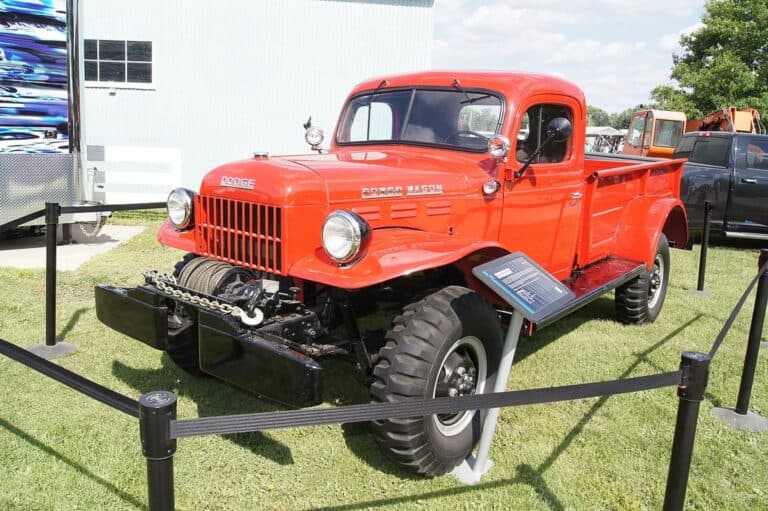
Dodge Power Wagon
Tracing its lineage back to World War II military utility pickups, the Power Wagon has a legacy that is almost as revered as the mighty Jeep found elsewhere on our list.
Absolutely rugged and with excellent off-road capability in equal measure, the Power Wagon found a second life as a farm truck, off-road rig, and beefy daily driver for generations of men, finally being properly discontinued in the mid-1980s, though the badging lived on for other, unrelated vehicles.
This is a fine choice for ferrying you through an EMP scenario, but I will warn you that Dodge really did build these things for performance and capability, not comfort. The ride is kidney-rupturing when the road gets rough, but you better believe that it will get you there!
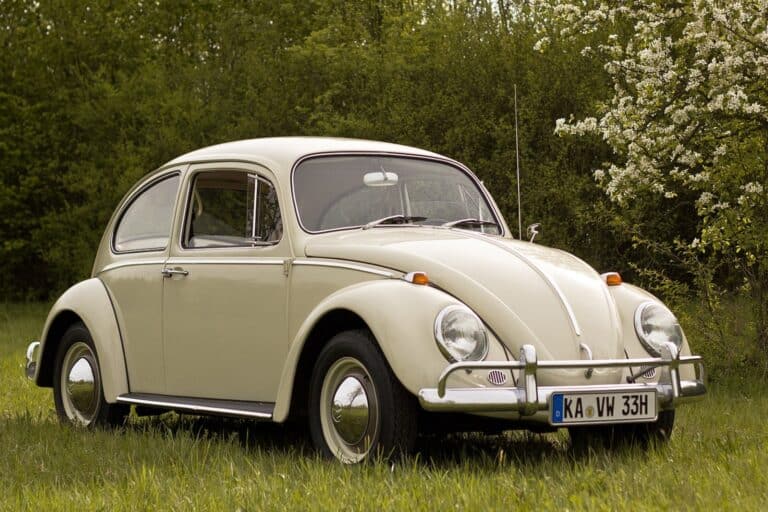
Volkswagen Beetle
I know this inclusion is bound to raise a couple of eyebrows, but if you’ll bear with me, you’ll see that the classic Volkswagen Beetle, specifically the pre-’70s models, is a great and versatile choice…
Aside from the fact that millions of them have been made around the world, meaning parts are widely available, they’re still a comfortable and useful daily driver that can offer you a surprising amount of cargo room if it’s just you and one other person.
A total lack of electronics and the air-cooled engine mean that the little Beetle will be completely unfazed by an EMP. Your biggest risk will be watching out for other cars that get knocked out on the road after the event!
Don’t hesitate to nab one of these if it’s in running shape and then tune it up, and if you want more off-road capability, you can always convert it into a dune buggy.
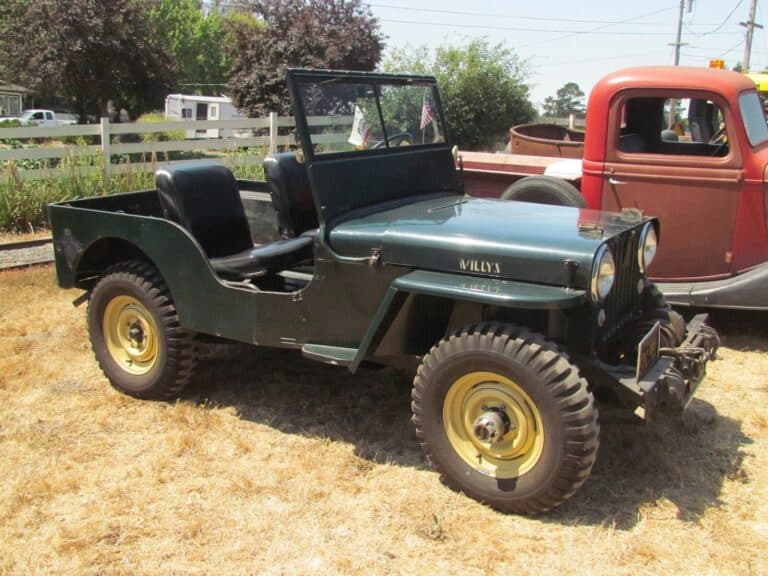
Jeep CJ
No list of vehicles with apocalypse potential would be complete without a Jeep somewhere on there!
And while enthusiasts will argue until the end of time about whether or not the current crop of Jeeps are real Jeeps or not, we’re looking backward to get our fix and with good reason…
Basically a slightly remodeled military Jeep, the CJ is the quintessential civilian off-roader and rock crawler.
With many minor variations over the long decades of its life, lasting all the way until the mid-’80s, every last one of them is virtually unstoppable off-road.
The CJs have a reputation for Spartan dependability and serviceability, meaning you’ll be able to easily repair them and maintain them yourself with a little bit of know-how. The lack of electronics in the earlier models means an EMP won’t faze them.
Major drawbacks to consider are minimal cargo room and an extremely harsh, jittery ride at highway speeds.
International Harvester Scout or Scout II
Originally introduced as a competitor to the Jeep, and renowned for its good looks, increased comfort, and excellent off-road capability, this classic 4×4 is an inspired choice for an EMP-proof ride.
Designed with simplicity, straightforward mechanics, and serviceability in mind, this is a vehicle that can carry you over the roughest terrain in the aftermath of an EMP and do so in style.
There are two versions out there to look for: the Scout and Scout II. The Scout II came along in 1971 but is still as simple and electronics-free as its predecessor, and you’ll have an easier time tracking down one of those.
They command a major premium today thanks to their desirability from collectors, but there are still lots of them out there, and you can get into a good one for cheaper than the cost of a new compact SUV. Not a bad choice in my mind!
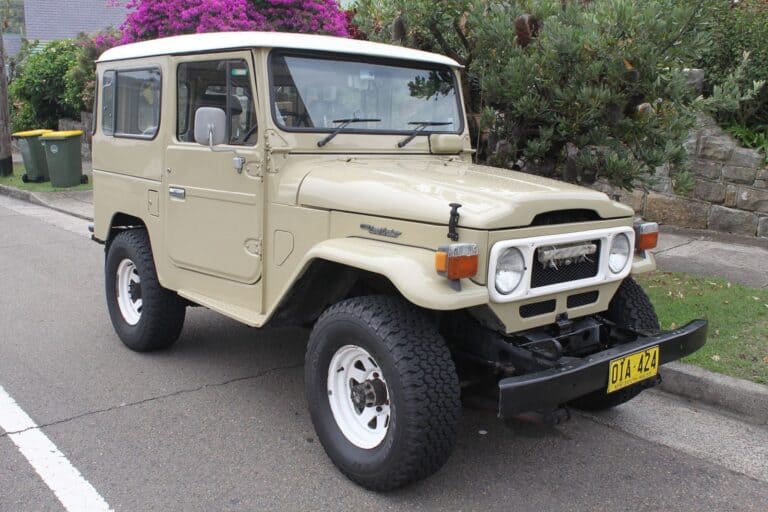
Toyota Land Cruiser FJ40
Another unstoppable legend among 4×4 enthusiasts, the FJ40 is renowned for incredible longevity, ruggedness, and supreme off-road handling.
They’re also one of the most numerous 4x4s to be found around the world, though remaining models in the United States are collectors’ items and hotly coveted.
You might have to shell out premium bucks even for one that isn’t running and then be facing a lengthy repair or restoration, but it’s worth it in this case.
These SUVs are just tanks, and even though I’m a Jeep fan myself, I can say that nothing runs better or longer. Plus, you have a little more cargo room compared to the Jeep.
As with all the other vehicles on our list, earlier is better, and though Toyota didn’t stop making these until the mid-’80s, you want to gun for one that is pre-’80s and preferably early ’70s or older.
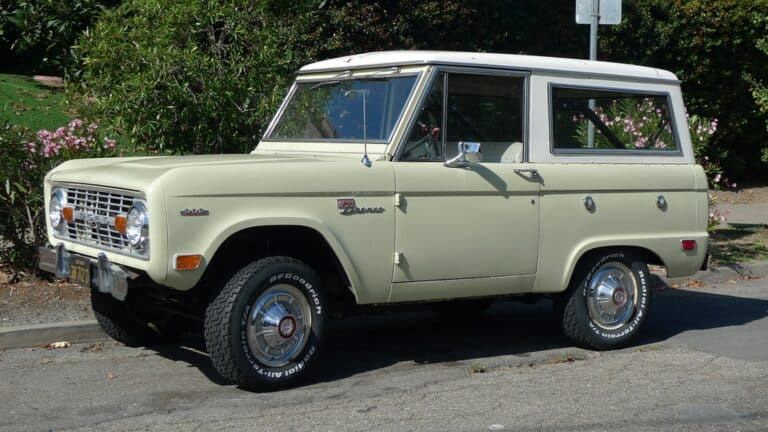
Ford Bronco
A long-running and prestigious 4×4, Ford’s Bronco deserves to be on the podium alongside the Scout, CJ, and FJ40.
Very capable off-road and offering more comfort than either the International Harvester Scout or the Jeep CJ, you can get the first-generation Broncos, built between 1966 and 1977, as either a short pickup, wagon body, or open-top four-by-four.
Aside from being EMP-resistant thanks to an overall lack of electronics, the Bronco can also offer you a tremendous amount of power thanks to available V8 options or a reliable and efficient 2.8-liter 6-cylinder engine.
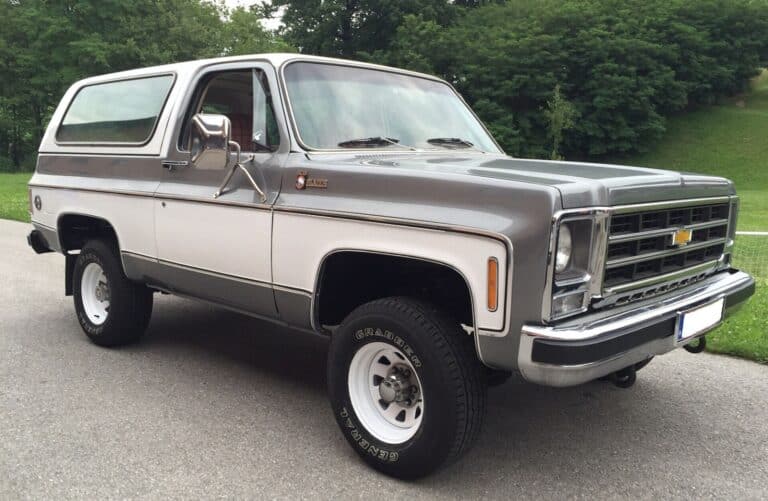
Chevrolet Blazer K5
Last but not least on our lineup of domestic 4x4s, the Chevy Blazer is often seen as an also-ran compared to the other more prestigious SUVs on our list, but it has a lot to recommend it as a bug out vehicle, and it is one that will still work wonderfully as a daily driver.
Like the Bronco, the Blazer has a choice of 6- or 8-cylinder engines depending on your power requirements and is entirely comfortable off-road, although not quite to the same degree as the FJ40 and the Jeep.
But, I will say if you want a true do-it-all vehicle that can serve you every day, and not just wait in the barn until the “Big One”, the Blazer is great.
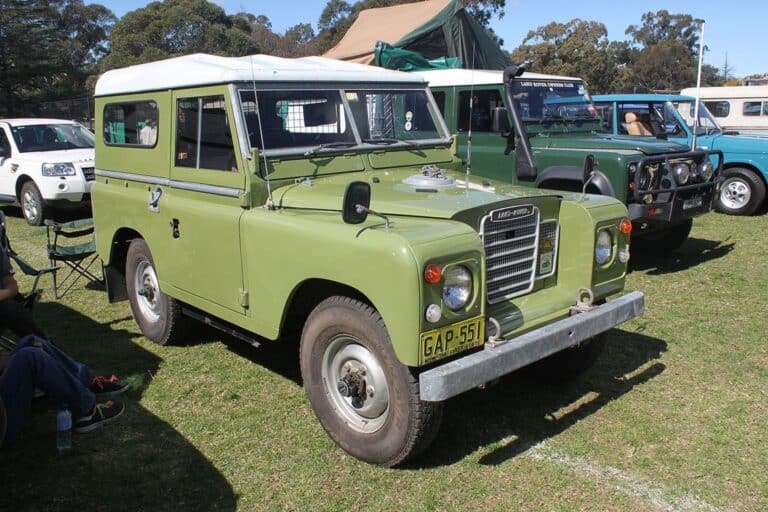
Land Rover Series III
Another iconic off-road machine, and one with a well-deserved spot on our list. The Series III Land Rovers are boxy, utilitarian, and designed for sustainability even under harsh field conditions, as befits its military heritage.
You can get them in long or short wheelbase versions depending on your desire for cargo and passengers or maneuverability.
Again, these are a collector’s item and getting harder and harder to find in the United States, but it’s entirely possible to get running ones that need plenty of TLC for a modest price, and if you look at them as an investment towards your safety in the aftermath of an EMP, it’ll make that price tag a little bit easier to stomach.
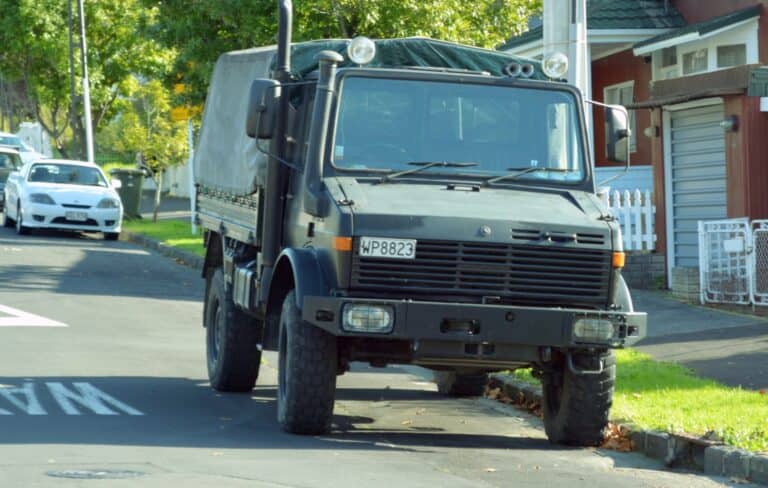
Mercedes-Benz Unimog 416/435
Mercedes-Benz doesn’t just make luxury vehicles for the well-to-do. The Unimog is well-known among lovers of big trucks and death-defying off-road overlanding for its insane capability thanks to its flexible frame and extreme ground clearance.
In one form or another, these trucks have been in production for a very long time, all the way through today, so once again, you’ve got to get one made prior to 1978 to minimize EMP vulnerability; like all other vehicles, they became increasingly packed with electronics after this time.
The Unimog is not a daily driver, being a giant gas hog and also gigantic generally. But if you need unparalleled cargo room and the ability to tackle literally any kind of terrain, this German behemoth is a top choice.
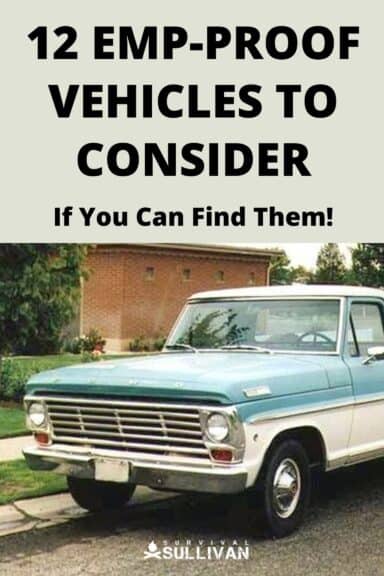

Tom Marlowe practically grew up with a gun in his hand, and has held all kinds of jobs in the gun industry: range safety, sales, instruction and consulting, Tom has the experience to help civilian shooters figure out what will work best for them.

A Sarmat level EMP will likely fuse the wiring of an altenator and starter, and spot weld the points. So have spares. (The old 50’/60’s data for EMP’s no longer applies) Not to mention that the fuel you have will probably be all you’ll ever have, since the local supply will be quickly salvaged, and no more will be coming for quite awhile.
a bicycle is also good, if you don’t gotta shoot a gun (and I think in most WROL situations (law breaks down somehow, but “everything is mostly normal” – relatively little riotosity), the main reason you’d shoot a gun would be to down a bear)
you’re going to want to preserve your diesel (and you are using diesel post-EMP as petrol ignition systems will all be kaputt) for long or heavy trips – just like today, in fact.
I am wondering about some of the dates for various models that are supposed to be EMP-proof. The most common date I have read is 1975, the year that the automotive industry switched to electronic fuel ignition for gasoline-powered engines. I have also seen articles that said that most diesel engines were EMP-proof until the early 90s.
I have no dog in the fight. I simply want to know the correct date. I own a 1946 Willys powered by a diesel engine, and my SUV has an EMP Shield installed. I’m hoping that both vehicles will be mobile if the worst case occurs.
Any car made before 1972 would be a good pick. GM cars and trucks in the 70 to 80 years with HEI ignition would be good just buy the parts inside the distributer and store them in a faraday cage. I know some one will comment that I can not spell well.
Any car or truck before 1972 should work
After 50 years of electronic controls, automotive engineers have learned a lot about shielding the computers and body harness, which is the antenna that “receives” the pulse. After a distant pulse, the greatest problem will be gas pumps not working.
I would say the late ’70s and early ’80s are the years to avoid, if you are worried about “the big one.” Working with two-way radio repair, I found that the unshielded wiring of early electronic spark control would sometimes pick up the radio signal and shut down the engine as long as the mike button was pressed. Shut downs occurred on patrol cars and highway dept pickup
If you are going for a gasoline engine, ignore the exact vehicle year. Make sure the engine is old enough to be carbureted, and to have point and condenser spark timing. Have spare points and condensers NOW, and know how to change and set them.
Otherwise, get a vehicle with a manually injected diesel engine.
The worst thing to have would be a plug-in hybrid or electric car that is connected to the mammoth antenna known as “The Grid” when the pulse happens.